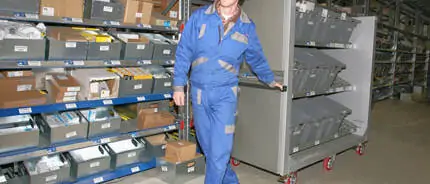Consignment
The term consignment refers to a form of delivery of goods in which the supplier acts as the consignor and the customer as the consignee. The consignor is the owner of the goods until either an agreed deadline expires or the consignor removes the goods from the consignment warehouse.
Consignment transaction process
The consignment process consists of the following steps:
- The goods are delivered to the customer in the consignment warehouse. The consignment warehouse is located at the customer’s premises.
- After the goods have been withdrawn, the customer receives a withdrawal document, which serves as the basis for invoicing (i.e. the customer receives an invoice according to the information recorded on the withdrawal document).
- The withdrawal of goods is reported to the supplier. The moment the customer withdraws the goods from the warehouse, he automatically concludes a purchase contract with the supplier.
- Depending on the agreements made in advance, the customer becomes the owner of the goods upon removal or after payment.
- At the end of the consignment transaction, the customer receives an invoice.
The supplier and customer determine what stock of the goods should generally be available in the warehouse. If the stock falls below this level due to the withdrawal of a certain quantity, it is the supplier’s responsibility to replenish the warehouse. Invoices for the quantity of goods withdrawn are then issued at regular intervals. Depending on the agreement, the customer can receive invoices weekly, monthly or even quarterly, for example. It can also be agreed whether the customer may transfer a certain remaining quantity of consignment stock to its own stock after a certain period of time.
The advantages of consignment
For the customer, the advantage of a consignment warehouse is that it is free from logistical risks, such as late delivery. As the goods are already at the customer’s premises but belong to the supplier until they are removed, the capital commitment for the customer is zero. In addition, the supplier continues to bear the risk for the goods until the final purchase. But the supplier also benefits from a consignment warehouse. Among other things, it reduces warehousing costs and the planning effort for transport.
International consignment
In the case of international consignment within the EU, the delivery of goods is duty-free. However, this does not mean that no VAT has to be paid. It simply means that VAT is not due in the country of production, but in the EU country into which the goods are imported. In both national and international consignment transactions, the consignment transaction is concluded with an invoice including VAT. In the case of national transactions, domestic VAT is charged and in the case of international transactions, foreign VAT is charged.
You can find more information under Short delivery.
Image licence: CC BY-SA 3.0, Author: KBS Industrieelektronik GmbH
